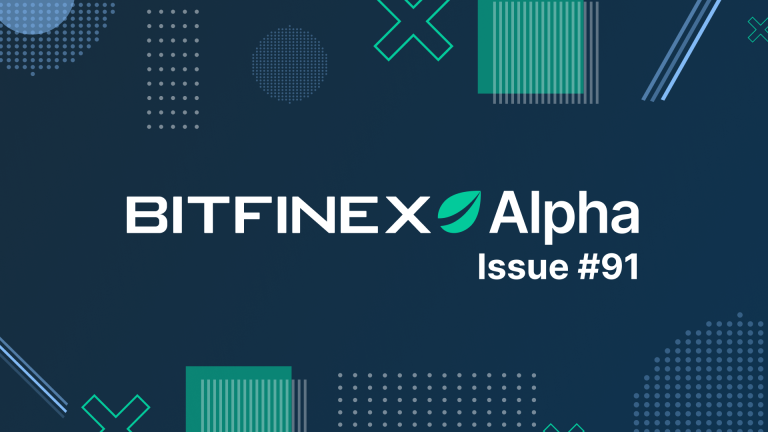February 12 Bitfinex Alpha | Bitcoin's momentum is positive across all time horizons
In Bitfinex Alpha
Investor confidence in Bitcoin is on the rise, as evidenced by Bitcoin's rally last weekend. We attribute the gains in part to a slowdown in the selling of Grayscale's GBTC funds, and a significant rise in overall crypto asset flows.
In fact, Bitcoin holdings of new BTC ETFs are now larger than MicroStrategy's holdings, and we expect inflows to continue. These inflows, coupled with Bitcoin's impending halving in 2024 and persistent high levels of illiquid supply – with more than 70 percent of Bitcoin in the hands of long-term holders – paint an exceptionally bullish picture for Bitcoin price movements.
On-chain data also increasingly supports a more bullish environment for Bitcoin, with the MVRV in particular rising above the one-year simple moving average. The realized price also provides short holders with positive signals as a slowing rate of appreciation in this measure indicates a slowdown in profit taking, indicating the market consensus that there may be more room for growth.
Meanwhile, the current economic landscape in the US suggests that interest rate cuts are unlikely to occur in March and are now more likely to occur in May. The latest survey of senior loan officers reveals a nuanced scenario in which lending standards across most loan categories continued to tighten in the fourth quarter, albeit at a slower rate, in an apparent response to an easing contraction in loan demand across all categories.
This is reflected in the behavior of businesses and consumers, who show a reluctance to take out new loans, as evidenced by the sharp decline in consumer credit growth. The backdrop of higher interest rates has cast a shadow on consumer spending, which we believe represents a compelling case for the Fed to ease interest rates soon.
However, in balance, new data shows that US services have accelerated, driven by an increase in new orders and a recovery in employment levels.
The picture is of a US economy, which has shown remarkable resilience, despite the challenges posed by high borrowing costs, tight credit conditions, and diminishing savings in the pandemic era.
Large government spending and consumer savings have been pivotal in driving GDP and employment growth. But it is clear that higher borrowing costs and tighter credit conditions risk suppressing economic activity, which should spur the Fed to respond if it is to maintain economic growth momentum and address emerging challenges.
In the cryptocurrency industry, new Bitcoin ETFs have achieved a new milestone, as their holdings have now surpassed those of MicroStrategy. This growth confirms the strong demand for these products, especially by investors who prefer the easier access they provide and who wish to delegate custody to a third party.
In parallel with this momentum, the regulatory landscape continues to evolve, with Hong Kong unveiling a public consultation on a new licensing framework aimed at regulating over-the-counter trading. This initiative seeks to enhance regulatory clarity and protect investors by reducing the risks of money laundering and terrorist financing.
Institutional enthusiasm for cryptocurrency investing is also reflected in Chicago Mercantile Exchange data showing a 35 percent rise in trading volume in January, driven by a 42 percent increase in Bitcoin futures trading, which reached $73 billion, following approvals of spot Bitcoin ETFs.
Furthermore, the regulatory environment is becoming tighter elsewhere, with South Korea introducing the Virtual Asset User Protection Act, which is set to take effect on July 19. This legislation imposes strict regulations on the cryptocurrency industry, including severe penalties for serious crimes such as market manipulation and illegal manipulation. commerce.
Happy trading!

